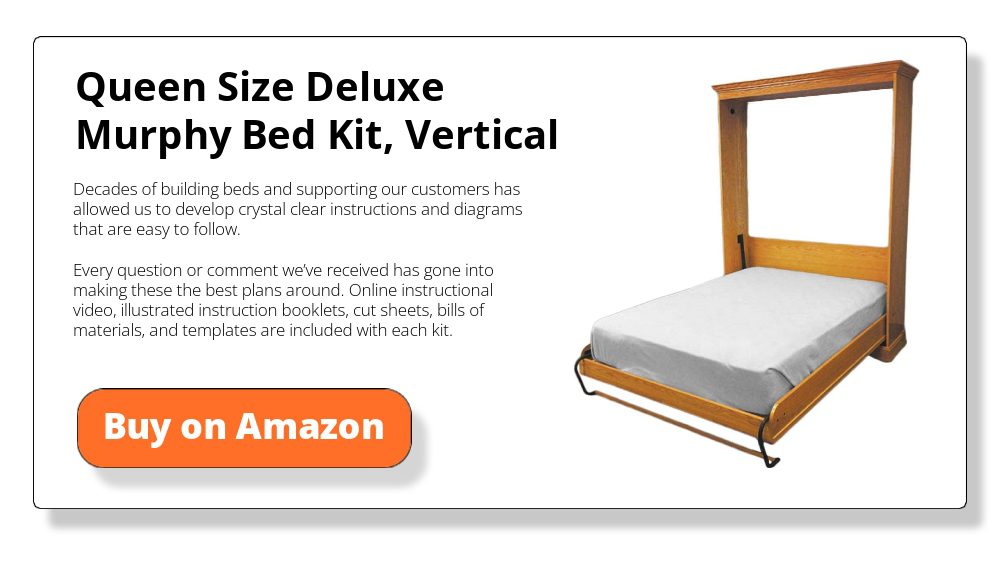Last Updated on May 27, 2024 by teamobn
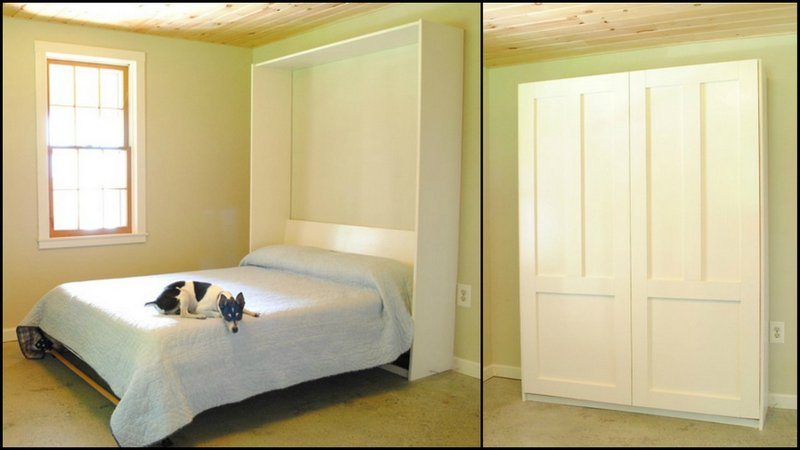
When you have more people in the house than space, then you might want one particular space of your home to act as double – a space that can serve as two or more different spaces. What are the options?
If your spare room doubles as a home office, craft room, or playroom for the kids, then a fold-away bed may be the perfect solution for freeing up floor space. This bed would work just as well in a granny flat or bedsit.
If you’ve done some pre-made Murphy bed hunting before you know that they could be quite expensive! By building your own, you could cut costs and have a well-fitted Murphy bed in your room.
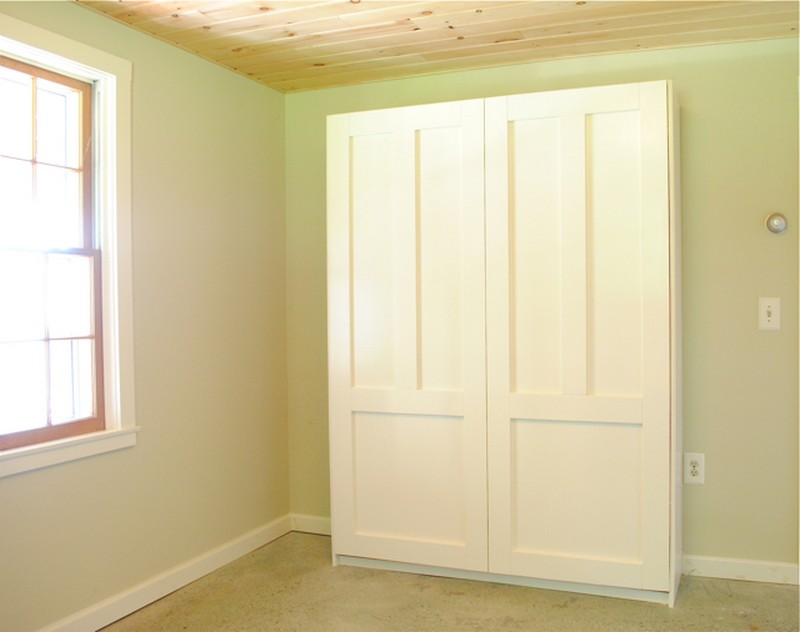
Building a Murphy Bed
The very first step of building a Murphy bed is gathering all the necessary materials needed for your project. Make sure you already have a design on your hand on how your folding bed would look like and follow these steps.

Materials
- 3/4″ Plywood
- Coat and Paint
- Metal Brackets
- Screws
Tools
- Hammer
- Power Drill
- Table Saw
- Sander
Instructions
Build a headboard
The headboard of your Murphy bed will serve as the cabinet frame of your folded bed. So make sure that it will be sturdy enough to hold your bed when not in use.

Build the bed frame
You’ll need to take measurements of your room so you can build the right size frame for your Murphy bed. When building your frame you have to make sure that you have enough room for it to fit on the headboard.
The frame usually consists of the headboard, the footboard, and the rails. The headboard and footboard are placed at the head and foot of the bed respectively.
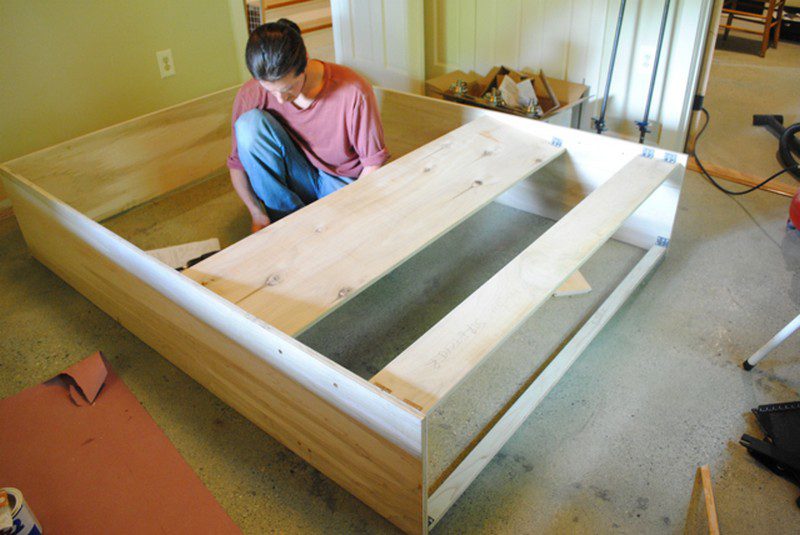
Build the rail system
The rail system of the Murphy bed is also important. If you have a bed that folds up and down with a system that uses rails and brackets that is not sturdy, then you cannot put a lot of weight on the top of the bed and you cannot leave a lot of items on top of the bed when the bed is folded down.
This is because the rail system will not be able to support the weight of the furniture and items on the bed when the bed is folded down.
The rails are attached to the sides of the bed. The rails can either be the same length or different lengths. The purpose of the rails is to secure the mattress.
The length of the rails is important as they will determine the width of the mattress. So you should make sure that choosing quality materials for your Murphy bed is vital.
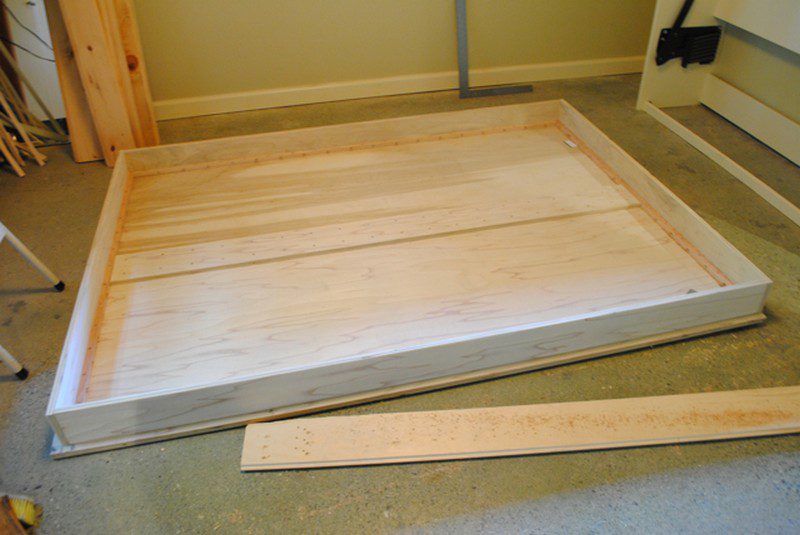
Assemble the bed!
Finally put the parts of your bed together. Assembly is a very important part of setting up your Murphy bed. Murphy beds need to be assembled carefully and correctly.
We recommend that you assemble the bed first on the floor before you place it on the wall. Make sure to attach all of the pieces correctly and tightly. Make sure not to leave any loose screws behind because it will be a reason that your bed won’t be safe enough to sleep with.
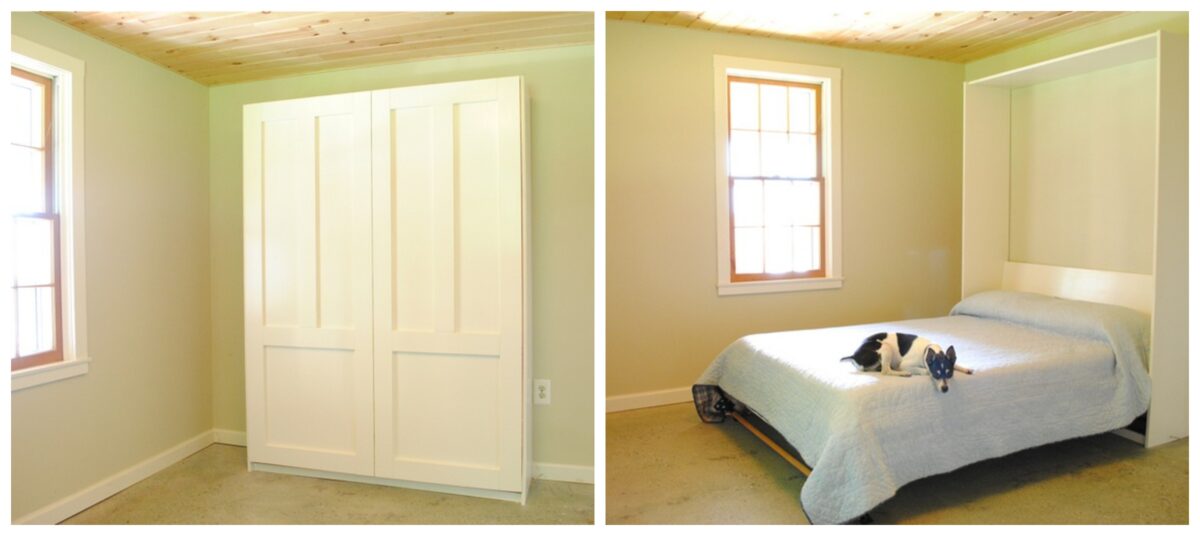
Do you want a simple-looking Murphy bed like this?
Click on any image to start the lightbox display. Use your Esc key to close the lightbox. You can also view the images as a slideshow if you prefer 😎








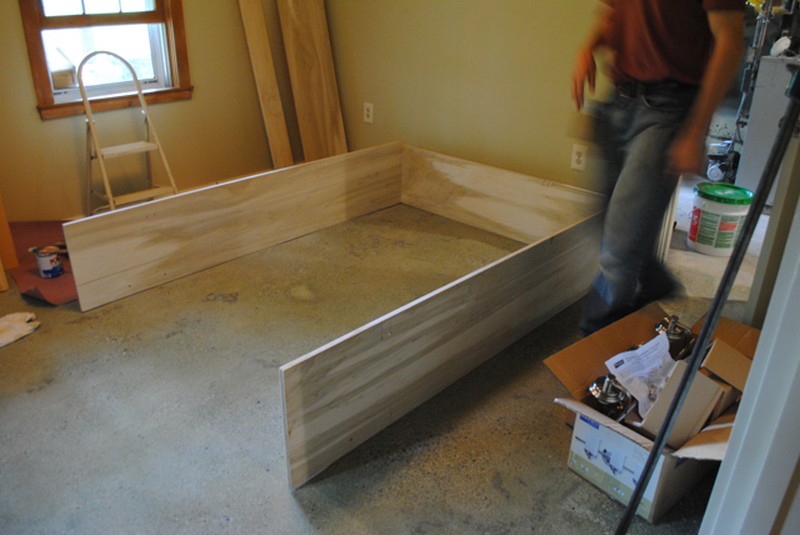

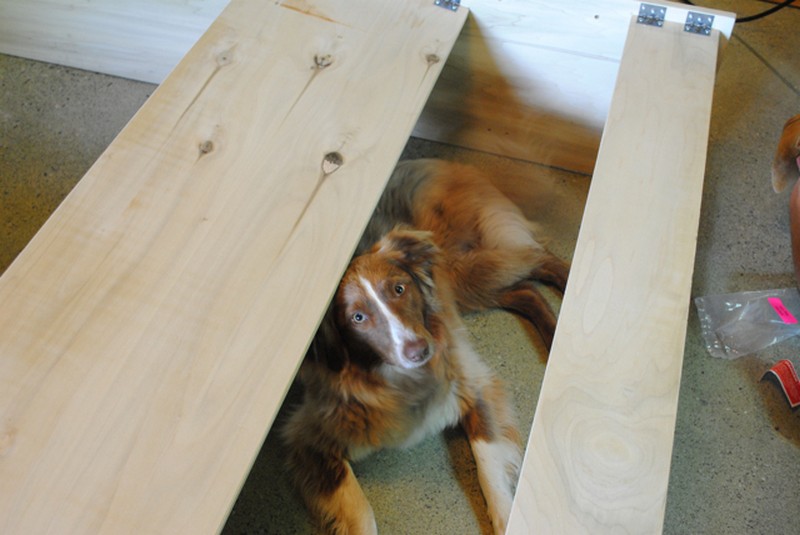
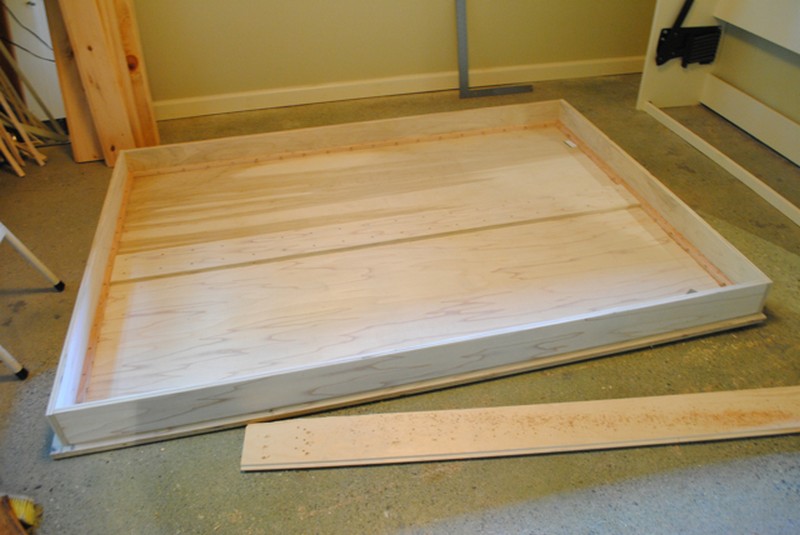
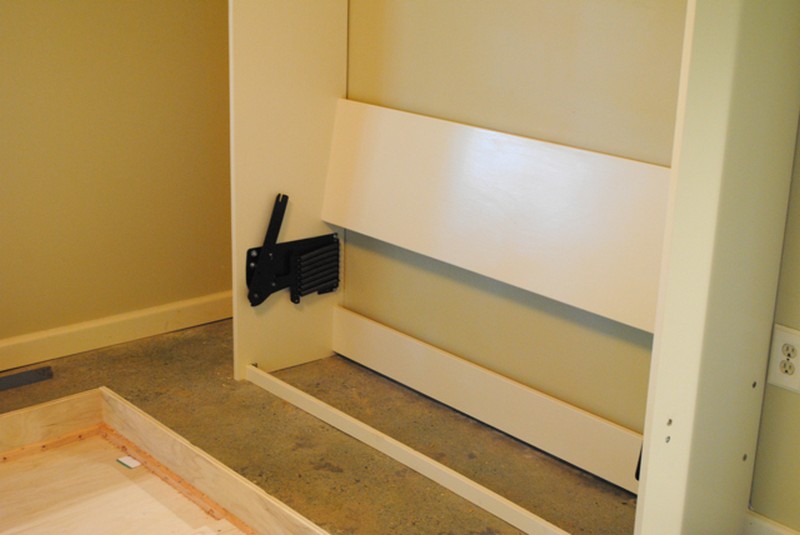
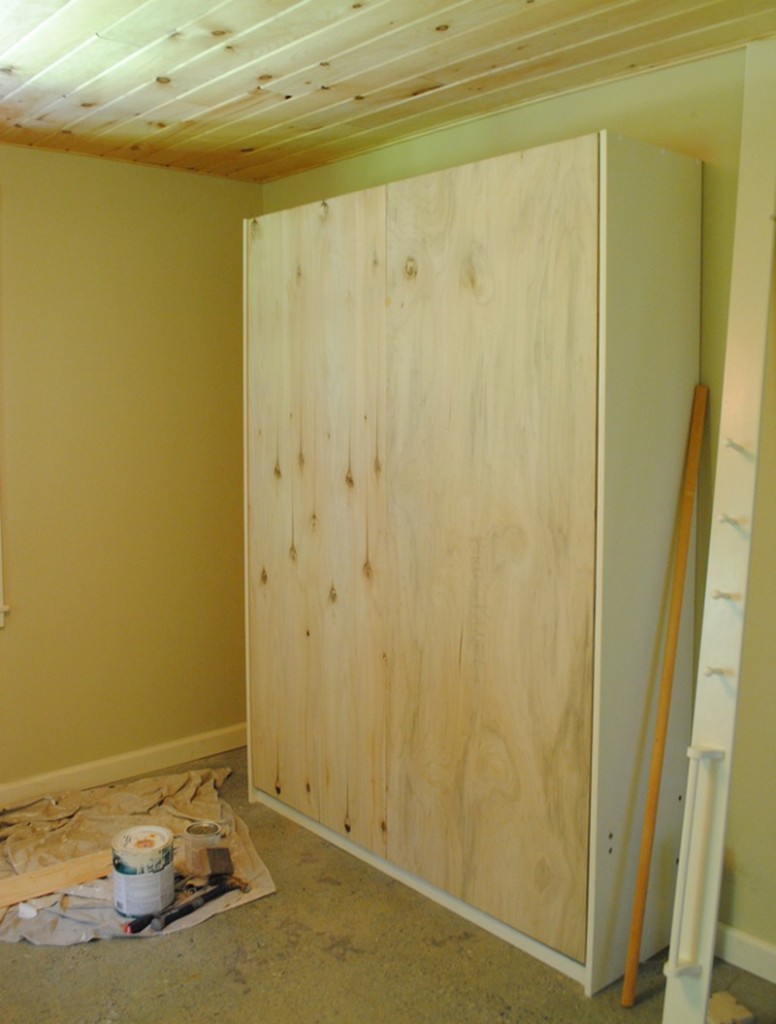
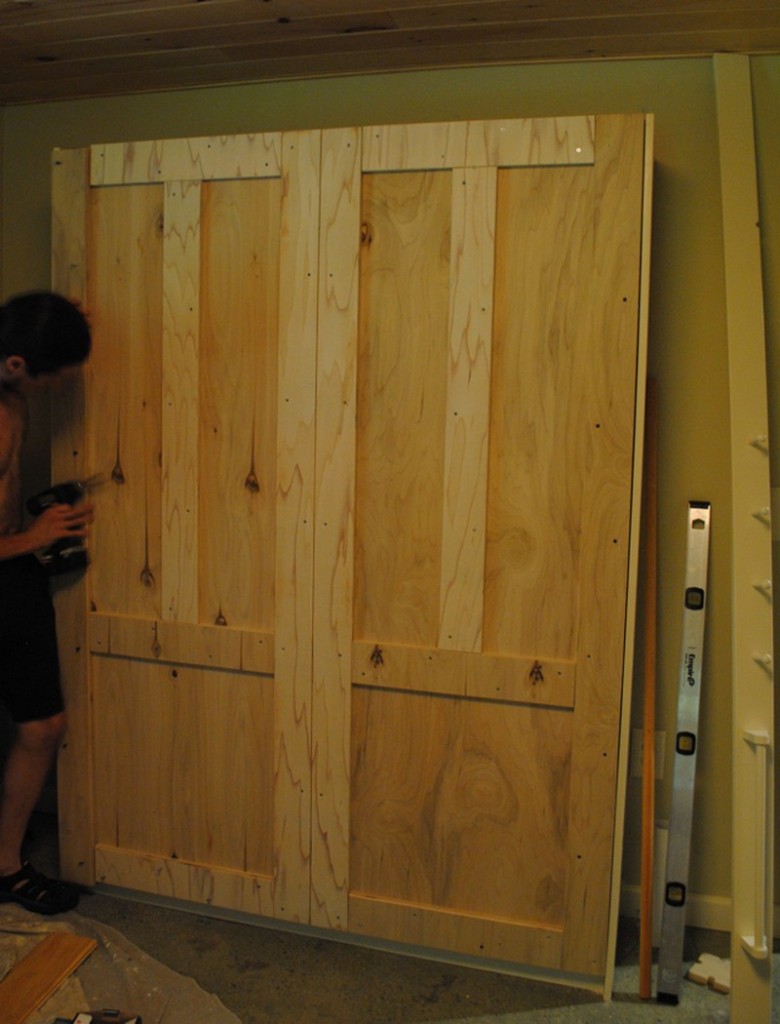

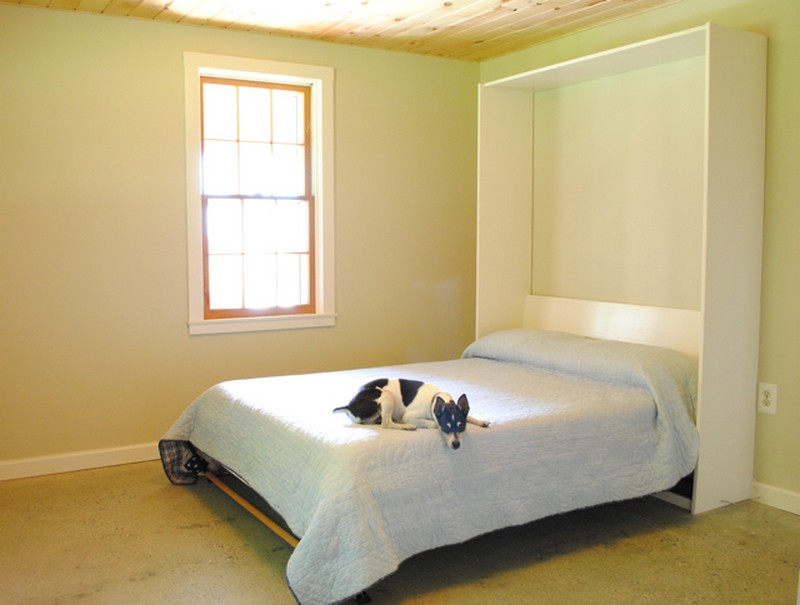
Thanks to Little Dog Vintage for this great project. You can get the step-by-step instructions here…
Choosing the Right Materials for Your Murphy Bed
One of the most important things to consider with your Murphy bed project is selecting the appropriate materials. Your Murphy bed’s durability and lifespan are affected by the wood and parts used to build it. The right materials and parts lets you create the best possible bed.
Wood Selection
- Plywood: Plywood’s strength and affordability make it a common material choice for Murphy beds. To make sure your bed can resist the abrasions caused by folding and unfolding, choose plywood of a better grade. Smooth-finished plywood will make painting or staining easy.
- Solid Wood: A more substantial and expensive choice would be solid wood such as oak, maple, or cherry. These woods are incredibly durable and can be exquisitely treated to blend perfectly with the design of your space. Make sure your wall can handle the weight though, as solid wood is more costly and heavier than plywood.
Metal Components
- Aluminum: Lightweight and corrosion-resistant, aluminium is a great material for the moving components of the frame. It works particularly well for families seeking a long-term solution or in houses with excessive humidity.
- Steel: A robust Murphy bed needs steel hinges and brackets. Pick premium steel to safely support the weight of the bed. Stronger and more wear-resistant steel is stainless or powder-coated.
Fasteners and Hardware
- Screws and Bolts: Use high-quality screws and bolts that can handle the weight and frequent movement. Avoid cheaper options that may rust or strip easily. Consider the length and diameter appropriate for your materials to ensure a tight fit.
- Hinges and Springs: Invest in high-quality hinges and springs designed specifically for Murphy beds. These components should support smooth operation and hold significant weight without risking sudden closures.
Finishes
Select finishes that not only enhance the look of your bed but also protect the wood. For a modern look, choose a satin or semi-gloss paint. If you prefer a natural look, opt for a stain that highlights the wood’s grain. Ensure the finish is durable and easy to clean, as the bed will be handled frequently.
By carefully selecting each material for your Murphy bed, you can create a durable, functional, and visually pleasing addition to your home. These choices will affect not only the bed’s aesthetics but also its longevity and ease of use.
Common Mistakes to Avoid
Building a DIY Murphy bed can be a rewarding project that saves space and adds functionality to your home. However, there are common pitfalls that can turn this exciting project into a frustrating ordeal. To help you successfully complete your build, here are key mistakes to avoid.
Incorrect Measurements
Not Double-Checking Room Dimensions
One of the most frequent mistakes is not taking accurate room measurements before starting the project. Ensure you have enough space for the bed to open fully without obstruction. It’s crucial to measure the height, width, and depth of the intended space and consider any additional room for the bed’s frame and mechanism.
Ignoring Clearance Space
Forgetting to account for clearance space around the bed can lead to problems with its deployment and use. Make sure there’s ample space for walking around the bed when it’s down and for accessing other furniture in the room.
Choosing the Wrong Materials
Opting for Low-Quality Wood or Metal
Using materials that aren’t durable enough for a Murphy bed can result in a shaky and unsafe bed. Always opt for high-quality woods like plywood or solid hardwoods and robust metals like steel for the hardware.
Skimping on Hardware
Selecting cheaper, lower-quality hinges, screws, and rails might save money upfront but can compromise the bed’s functionality and safety. Invest in high-quality hardware that can withstand the weight and frequent movement of a Murphy bed.
Inadequate Wall Support
Failing to Secure the Bed to Wall Studs
Murphy beds must be securely attached to wall studs, not just the drywall. This mistake can lead to structural failures when the bed is used. Use a stud finder to locate the studs in your wall and ensure that your mounting hardware is adequately anchored.
Using Inappropriate Mounting Hardware
Even if you secure the bed to wall studs, using the wrong type of mounting hardware can lead to structural failures. Ensure that the hardware (bolts, anchors) is suited for the type of wall (drywall, brick, concrete) and the weight of the bed.
Not Considering Wall Material
Different wall materials have different load-bearing capacities. For instance, mounting on a brick wall differs significantly from mounting on a plasterboard wall. Evaluate the suitability of your wall material and possibly consult a professional if you’re unsure about its ability to support the bed’s weight.
Overlooking the Mechanism
Choosing the Wrong Lifting Mechanism
The lifting mechanism is crucial for easy and safe operation of the Murphy bed. Using a mechanism that is too weak or too strong for the bed’s weight can make it hard to use or dangerously unstable. Match the mechanism’s specifications with the size and weight of your bed.
Neglecting Smooth Operation
It’s crucial to ensure that the mechanism allows for smooth opening and closing of the bed. A mechanism that sticks or squeaks can be frustrating and may indicate poor installation or a mismatch with the bed’s size and weight.
Not Adjusting Tension
Some Murphy bed mechanisms allow for tension adjustment to balance the bed’s weight during use. Not adjusting this tension can lead to a bed that is difficult to pull down or push up, creating a usability issue and increasing wear on the mechanism.
Neglecting Aesthetics
Not Planning the Finished Look
Some builders focus solely on the structure and neglect the appearance of the bed when it’s folded up. Consider how the bed will look in the room when it’s stored. Integrating the design with the room’s decor can make a Murphy bed an attractive part of your home, not just a functional element.
Disregarding Integration with Room Design
A Murphy bed should blend seamlessly with the room’s design when folded up. Ignoring this can make the bed stick out awkwardly. Consider the color, material finishes, and style to ensure it complements the room’s overall theme.
Overlooking Accessible Storage
While focusing on the bed’s appearance, don’t forget about practical aspects like accessible storage when the bed is closed. Integrating shelving or cabinetry that is functional both when the bed is stored and in use can enhance both aesthetics and utility.
Avoiding these typical errors can help to make sure your Murphy bed project is successful and fulfilling. Your bed will look fantastic, work well, and survive for years if you design carefully, pay close attention to detail, and utilize high-quality materials.
Conclusion
Building a Murphy bed requires careful planning and attention to detail, ensuring both safety and functionality. Choosing the right materials and following precise construction steps are crucial for a successful project. Once completed, a well-built Murphy bed can significantly enhance the versatility and space efficiency of any room.
If you liked this project, you will also like viewing these space-saving ideas…

